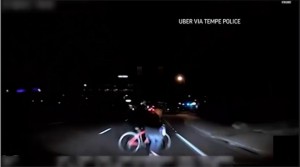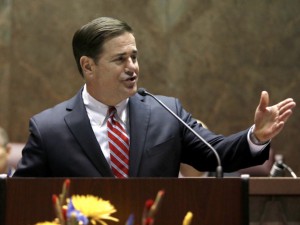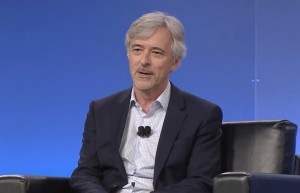In the wake of a fatal crash earlier this month, Arizona Governor Doug Ducey has suspended the permit allowing ride-sharing service Uber to test self-driving vehicles on the state’s public roads.
The move comes as state and public regulators try to find out why a Volvo SUV modified by Uber to drive with only a backup “operator” slammed into a 49-year-old pedestrian crossing a four-lane road on the evening of March 18 without even slowing or trying to swerve out of the way. The incident has raised broader concerns about autonomous technology – but also questions Arizona’s relatively laissez faire approach to testing such vehicles on public roads.
“In the best interests of the people of my state, I have directed the Arizona Department of Transportation to suspend Uber’s ability to test and operate autonomous vehicles on Arizona’s public roadways,” Ducey announced.
The governor declared the crash “an unquestionable failure,” after viewing a video taken by an onboard camera. It was “disturbing and alarming and it raises many questions about the ability of Uber to continue testing in Arizona.”
(Waymo’s Krafcik joins industry chorus questioning Uber’s technology. Click Here for the story.)
Uber is one of several dozen tech companies and automotive suppliers and manufacturers testing autonomous testing in Arizona, though the ban announced by the governor applies only to the ride-sharing service.
And it comes as a dramatic reversal of the open-armed welcome Ducey gave Uber less than two years ago. Uber had previously launched a test of its autonomous Volvo SUVs in San Francisco, but quickly ran afoul of state and local officials, in part, because it refused to get the necessary permit from the California Department of Motor Vehicles. Its prototype vehicles were also reported to have violated some local traffic laws, including cutting into bike lanes and running red lights.
But “Arizona welcomes Uber self-driving cars with open arms and wide open roads,” the governor said in late 2016 as the service moved its test vehicles over to the neighboring state.
The southwestern U.S. has one of the most aggressive regions in terms of encouraging testing of future automotive technology on its public roads, Ducey’s counterpart in Nevada, Gov. Brian Sandoval, in 2015 welcomed Freightliner as the first manufacturer to begin testing autonomous trucks on open roads.
The Silver state went so far as to create a special license plate bearing the infinity symbol for autonomous prototypes.
(Click Here for more details about the self-driving Uber test vehicle killing a pedestrian. )

The Tempe (Arizona) Police Department released the video footage of Uber's collision with a pedestrian.
Arizona has become more popular in recent years because of its lax environment, requiring less record-keeping than California where all manner of information was deemed to be in the public record, including not only crashes but even situations where the human operators in an autonomous vehicle had to wrest control back due to some technical fault.
Arizona recently became the first state to authorize the operation of fully driverless vehicles onboard, as well. And it recently provided a permit to Uber rival Waymo to begin setting up a commercial ride-sharing service using driverless versions of the Chrysler Pacifica Hybrid minivan.
Taking drivers entirely out of the vehicle is the ultimate goal for many proponents of self-driving technology. Uber’s founder and former CEO Travis Kalanick frequently suggested that such a move would lower the price of using a ride-sharing service to the point where it would be cheaper than owning and operating a private vehicle.
That has not only encouraged new tech-oriented entrants like Uber and Waymo but established automakers, such as General Motors. GM plans to begin testing driverless versions of its Chevrolet Bolt EV in a pilot ride-sharing service in 2019.
The exact cause of the Arizona crash, which killed Elaine Herzberg as she crossed from the center median onto the roadway, is unclear. Tempe police officials initially indicated that it was not the vehicle’s fault, and that was seemingly backed up by a video showing the woman unexpectedly emerging from shadows seconds before she was hit.
But videos taken by local residents in the same area have raised questions about that assessment and, over the weekend, Waymo CEO John Krafcik said “We have a lot of confidence” the company’s “would be able to handle situations like that one” safely.
(Uber fatality investigation produces more questions than answers. Click Here for the story.)
Critics, such as California group Consumer Watchdog, have pointed to the fatal accident as proof that all autonomous testing should be moved off public roads and onto private test facilities, such as the American Center for Mobility, in Michigan.



Gee Doug, you made that decision in only 9 days? I guess nap time is pretty important for a governor.